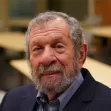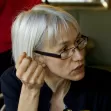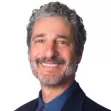The Daily Source of Urban Planning News
Can D.C.'s Mies Masterpiece Be Saved Without Being Sullied?
Philip Kennicott reviews plans to modernize Washington D.C.'s aging Martin Luther King Memorial Library, the city's only building designed by famed architect Mies van der Rohe, and his only library ever constructed.
10 Principles for Productive Public Spaces
Mackenzie Keast surveys the ten fundamental principles for placemaking identified by New York-based Project for Public Spaces (PPS) in their newly released handbook <em>Placemaking and the Future of Cities</em>.
How Much Will a 'Fill-up' Cost for an Electric Car?
With only 50,000 electric cars on the road now, many charging stations are free - but what happens when the number multiplies? Electric car charging companies are counting on the number increasing and are determining "how to charge for the charge."
Art Project Creates a Cozy Oasis in any Urban Room
A provocative art project dubbed the Urban Living Room has appeared on the streets of Rotterdam, its first stop on a worldwide journey to "support dialogue and connection in public realm."
What Makes a City Smart?
Does a smart city have to pursue sustainability goals? Does it have to utilize the internet to involve citizens? Boyd Cohen tries to put some parameters around the discussion of smart cities - a nebulous term that means many things to many people.
Bike-Share Creates Friendly Communities
The Christian Science Monitor argues why the growing popularity of bike-sharing programs across America will result in more cohesive communities and more livable places.
Seattle's Clashing, Confusing, and Disjointed Grid
Seattle is a city of grids (plural). Downtown, alone, contains three, making for some pretty interesting transportation challenges. Some argue it's simply part of what makes the city livable.
Lessons on TODs for DOTs
A new report produced by Smart Growth America and the State Smart Transportation Initiative offers recommendations for how state DOTs can innovate to support economic growth and better link land use and transportation decision-making.
The 50-Foot Commute Takes Off Across America
Jeff Khau examines the rise in the teleworking population and what this demographic shift means for cities.
Will D.C. Stand Up for America's Cities?
In his column Urban Nation, Harry Moroz argues for deeper involvement from the federal government in urban policy in order to give American cities the fighting chance they deserve to be healthy and enjoyable places to live.
What Leads to Occupational Cliches?
In New York, occupational cliches such as the Irish policeman, or more recently, the Pakistani cab driver, have existed for generations. NPR looks at one current niche - Senegalese sidewalk vendors - to trace how such associations are established.
Why Aren't There More Women in Design and Development?
Amanda Hurley explores the gender imbalance present among women in architecture and the "male-dominated world" of development, and questions the societal and biological justifications that many argue are determinants for choosing professional roles.
Inventive Infographic Charts Improvements in Driving Safety
Hannah Fairfield charts two variables - miles traveled versus deaths per 100,000 population - over the last 60+ years, and notes key technological or behavioral breakthroughs, to offer unique insight into advancements in driving safety.
New Tools Promote Civic Engagement
Ben Schiller spotlights the four winners of a competition organized by the National Conference on Citizenship and the Knight Foundation to improve civic health by making civic data "more valuable and accessible to decision makers and the public."
Study Shows Smart Growth Reduces Automobile Usage
A new study shows that denser, more transit-oriented development will lead to an overall decrease in miles driven, reports Angie Schmitt.
Why We Shouldn't Let Architects Shape Our Cities
In an essay for <em>The Guardian</em>, Jonathan Meades laments the "cult" of architecture and argues why "[a]ppointing architects to conceive places is like appointing foxes to advise on chicken security."
How Andres Duany Envisions the Future by 'Translating' the Present
Rick Hampson explores the New Urbanist vision for how cities will be designed and planned over the next 30 years, as told by the movement's co-founder, Andres Duany.
China Plans Rapid Growth in Urban Rail Systems
Unlike its slowing economy, infrastructure projects across China continue to expand. Already home to three of the world's most-used transit systems, China plans to invest $127 billion in the coming decade to build dozens of new urban rail projects.
Popular Video Game Makes Planners Out of Schoolchildren
Not heard of Minecraft yet? Than you must not have a 10-year-old child in your house. Luckily, Sarah Goodyear does, and for our benefit, she describes the popular children's video game that explores real-world urban planning ideas.
Solutions to Fixing the Gas Tax Crisis
The Wall Street Journal published a 10-page energy section with the declining gas tax problem on page 1. Five solutions are offered: taxing the miles, taxing the roads, indexing the gas tax, taxing the oil, and taxing the cars. Each has challenges.
Pagination
Municipality of Princeton
Roanoke Valley-Alleghany Regional Commission
City of Mt Shasta
City of Camden Redevelopment Agency
City of Astoria
Transportation Research & Education Center (TREC) at Portland State University
US High Speed Rail Association
City of Camden Redevelopment Agency
Municipality of Princeton (NJ)
Urban Design for Planners 1: Software Tools
This six-course series explores essential urban design concepts using open source software and equips planners with the tools they need to participate fully in the urban design process.
Planning for Universal Design
Learn the tools for implementing Universal Design in planning regulations.


































